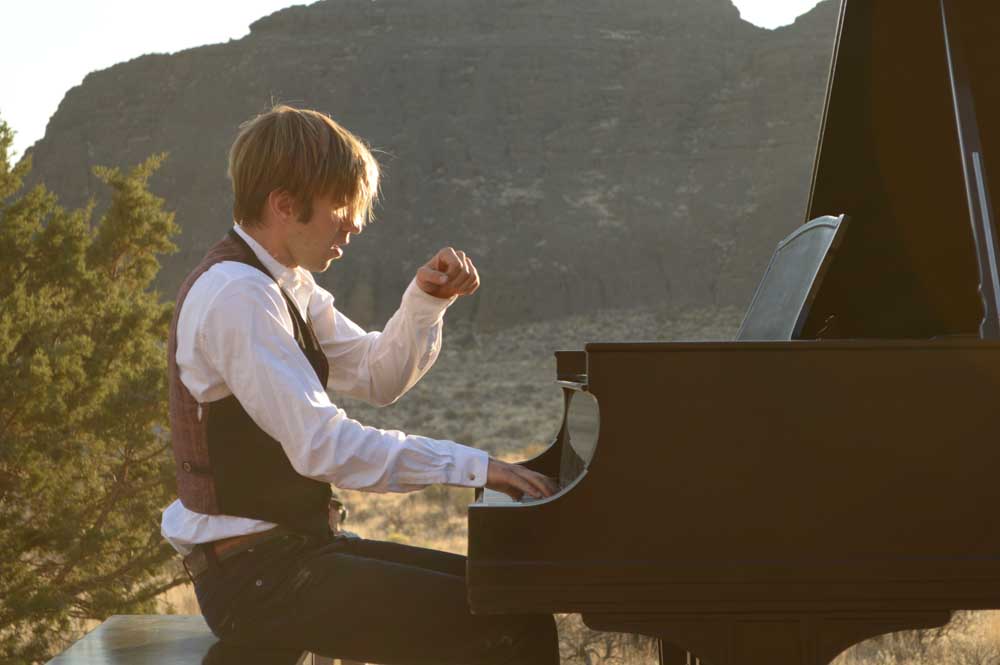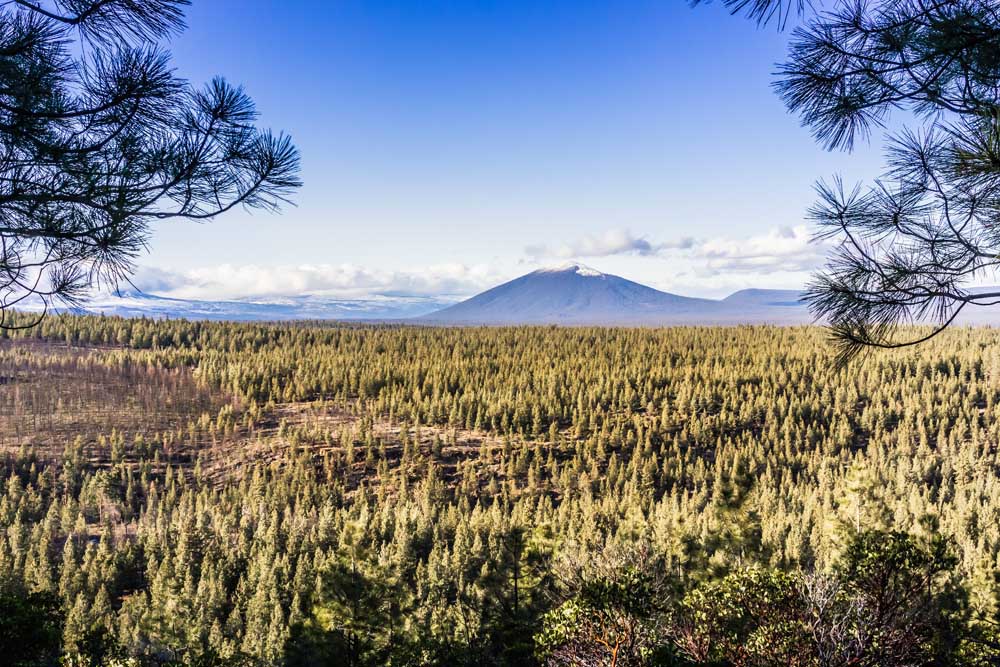Sunriver son performs ‘In a Landscape’
Published 12:00 am Thursday, June 27, 2019

- Hunter Noack performs at Fort Rock State Park during the 2018 In a Landscape concert series.
Portland-based pianist Hunter Noack returns to Central Oregon this week with his widely acclaimed “In a Landscape: Classical Music in the Wild” concert series. As its name suggests, the series is intended to bring live classical music to audiences in exquisite outdoor locations. Wireless headphones enable audience members to stray up to 100 yards in all directions — even up, at places such as Fort Rock (where he returns Sept. 7) or, new this year, Mt. Bachelor (July 21).
Fan Wendy Boring calls seeing Noack “A pretty incredible experience.” The Willamette University associate history professor has seen Noack perform multiple times in different settings, but her favorite was a 2017 performance at Suttle Lake near Sisters. “It’s such a familiar landscape. It’s a lake I’ve swam in so many times, and been around. To have him perform there was just amazing.”
The season ahead
Alas, if you don’t already have a ticket, you won’t be able to hear any of the first five concerts of the season — four of which are being held around Central Oregon: The first of the season is Thursday at Black Butte Ranch, followed by Cant Ranch in Dayville, the High Desert Museum and Sunriver Resort. (The fifth is July 8 at Mt. Ashland.)
Clearly, word has gotten out about the concerts, which Noack, 30, performs on a 9-foot Steinway grand piano normally reserved for stages in concert halls — not tuff rings, dry lake beds, volcanoes and other remote settings. Fortunately, this is the longest season yet for “In a Landscape,” and you’ll have other opportunities to catch him in the area. Prices are generally $25, but go up for fundraisers and special partnerships; a number of free tickets are available for some performances.
However, with concerts taking place in public spaces, it’s standard procedure to welcome anyone who might stumble upon a performance, according to Lori Noack, executive director of In a Landscape.
“The headphones may be gone but we ALWAYS encourage people to join the circle and listen, and if we do have headphones available we do our best to get them some. Welcoming people is a priority and these ‘surprise’ visitors who stumble on the event are a highlight of the season.”
The pianist has spent much of his life at a piano bench. He lived in Sunriver before heading to Michigan at 14 to study music at Interlochen Arts Academy. After graduating from the French American International High School and the San Francisco Conservatory of Music, he studied with pianist John Perry at the University of Southern California, where he earned a bachelor’s degree. Later, he pursued a masters at Guildhall School of Music and Drama in London.
Six years ago, Noack saw a production of the opera “Invisible Cities” that made use of wireless headphones, allowing audiences to hear a perfect mix of the music, and “follow whichever character in the opera they wanted to,” as Noack told GO! Magazine last year. At the same time, Noack had become interested in the Great Depression-era programs of the Works Progress Administration — which included the arts among its infrastructure-building ambitions, and concerts in public parks. From there, it was a short leap to In a Landscape, which debuted in 2016.
Luddites welcome
Boring, a self-described Luddite, says people should not be intimidated by the headphones.
“I wasn’t thinking I was going to like it that much,” she admitted, laughing. “I love classical music, and I love natural landscapes, but it was the headphone thing. … I’m kind of an anti-technology person in a lot of ways, but that was the thing that just blew me away the most — first of all, how crisp and clear the quality is, but you get to wander around the landscape, and just be present to it in a way that you just never get to, otherwise.”
She attended the concert with her son, Aaron, now 20, whose developmental disabilities she terms “pretty significant.”
“It’s super hard for him to go to regular concerts, but this one, he could just put his headphones on and walk around, and go down to the lake,” she said. “I loved how he could interact with it, and he was just totally delighted with the whole thing.”
Further, the concerts attract a different crowd than she’s accustomed to seeing at traditional classical concerts.
“(It) was pretty clear that there were people who happened to be camping at the lake,” Boring said. “There were, like, horse people, and hunters, just outdoors people who never would go to a concert hall, alongside my mother who’s a classically trained pianist.”
Counterintuitively, the headphones only deepened the camaraderie.
“So often, technology we think of about as separating us from one another, or creating loneliness or isolation. But in this case, the headphones actually create this incredible sense of community. It somehow accentuates that we’re all in this together. … As you’re wandering around — it’s probably my favorite thing about these concerts — you bump into people and you look them in the eye. It’s like this secret little smile, like we’re sharing this thing together, right. It’s not just the music, but it’s also the landscape.”
Custom remixes
Noack has about 2 1⁄2 hours of music in his repertoire, which allows him to remix programs to suit the environment in which he’s playing.
“Depending on the landscapes and depending on the guest artists, things change up. We have a different guest artist at most every concert,” he said. “There’s nothing bookish that would tell me that I should play (a piece) there. There’s no links historically, but there’s just something about the way the piece feels that just seems to fit. Sometimes those pieces are the most surprisingly effective.”
If he’s playing lakeside, he may go with Debussy’s “Reflections in the Water.”
“If it’s a windy day, I might play Liszt’s ‘Un Sospiro,’ which means, ‘A Sigh,’” he said. It’s not always a programmatic choice; sometimes a certain piece — the slow movement of a Beethoven sonata — “will just feel right.”
He’s even gotten an assist from composers in different regions. After George Meyer saw Noack the first year he played Fort Rock, “the next year, he brought me a manila envelope, and in it was a piece that he had written. And he said, ‘I wrote this for you.’ He was really shy and humble. He was inspired the year before and then wrote me a piece. It was really beautiful.”
Noack plans to play the piece Meyer wrote for him this year; last year, he played another tune a different composer, Justin Ralls, wrote for him with Fort Rock in mind.
“I think that’s really cool to have work that’s site-specific, that’s written for a landscape,” Noack said.
Even with 35 concerts, the season is not quite enough, Noack said: “I would love to play a concert every day of the year.”






